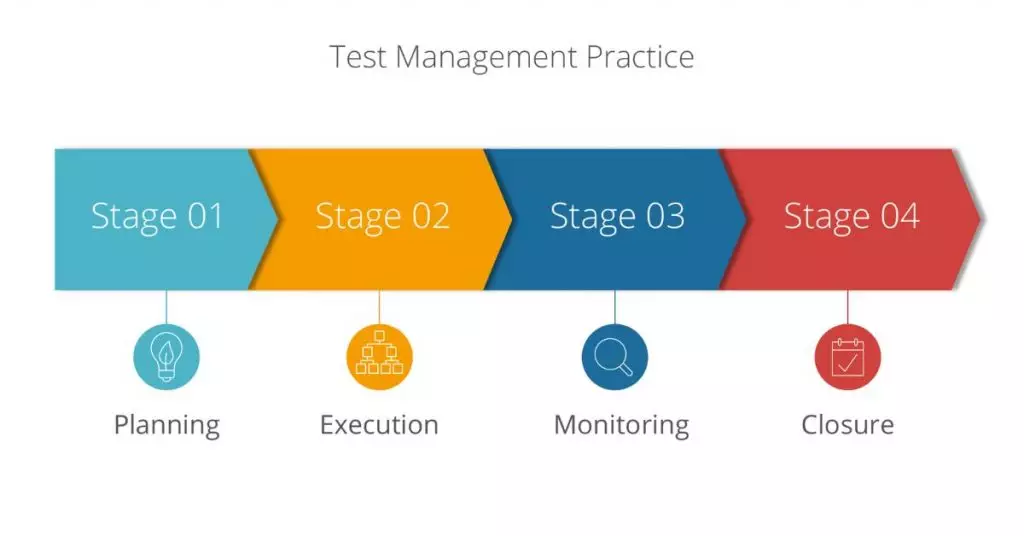As a QA engineer, one of the most important aspects of your job is test management. Without a well-thought-out and executed test management plan, your testing efforts are likely to be inefficient and ineffective. It is our responsibility to ensure that all testing is carried out effectively and efficiently, in order to ensure the quality of the final product.
So, what is the best test management practice for QA engineers to be efficient? The entire Test Management process can be divided into four main stages: planning, execution, monitoring, and closure. Each stage has its own set of activities that need to be carried out in order to ensure a successful outcome.

Planning
There are a number of different aspects to test management, and it is important to be aware of all of them in order to be successful. The first step is to create a test plan. A good test plan will take into account the different types of testing that need to be done (such as unit, integration, and system testing), the resources that are available, and the timelines for each type of testing. It will also specify who is responsible for each stage of testing and how the results of each test will be documented. This plan should outline the goals of the testing, the schedule, and the risks. It is important to involve all stakeholders in the planning process so everyone is on the same page.
Execution
Once the Test plan is in place, it is time to start executing it effectively. Here is where the real action takes place and the work gets done. An important part of test management is creating and maintaining a test schedule. Execution can be divided into two main phases: test design and test execution.
Test Design
Test design is the process of creating and maintaining test cases. Test cases are detailed descriptions of how to test a particular feature or scenario. They should be written in a way that makes them easy to follow and understand. This includes deciding what to test, how to test it, who will test it, and what criteria to set for success. Test cases are detailed descriptions of how to test a particular feature or scenario. They should be written in a way that makes them easy to follow and understand. The test cases should be updated as the project progresses and as new information is learned (such as when a new feature is added).
Test Execution
Test execution is the process of actually running the tests and recording the results. This is where bugs are found and fixed.
Monitoring
After the tests have been executed, it is important to monitor the results. Test cases should be linked to the requirements or user stories that they are testing. This will help ensure that all the necessary tests are being performed. Finally, it is also important to report on the results of testing. This helps to ensure that the team is aware of any areas that need improvement, and that the product is meeting the required standards.
This includes tracking the progress of the testing, analyzing the results, and looking for trends. Monitoring allows us to identify problems early and take corrective actions.
Closure
Once the tests are complete, it is time to close out the project. This includes documenting the results, creating a final report, and archiving the project artifacts. The closure is important to ensure that lessons learned are captured, this information can be used to improve the efficiency of the testing process and to identify areas that need further attention so that the project can be referenced in the future.
Test management is an essential part of the QA engineer’s job. By taking the time to create a well-thought-out plan and by following the steps outlined above, you can ensure that your testing efforts are effective, efficient and that the final product is of the highest quality.
If you’d like to learn more about the best test management practice, please speak to our QA experts.
